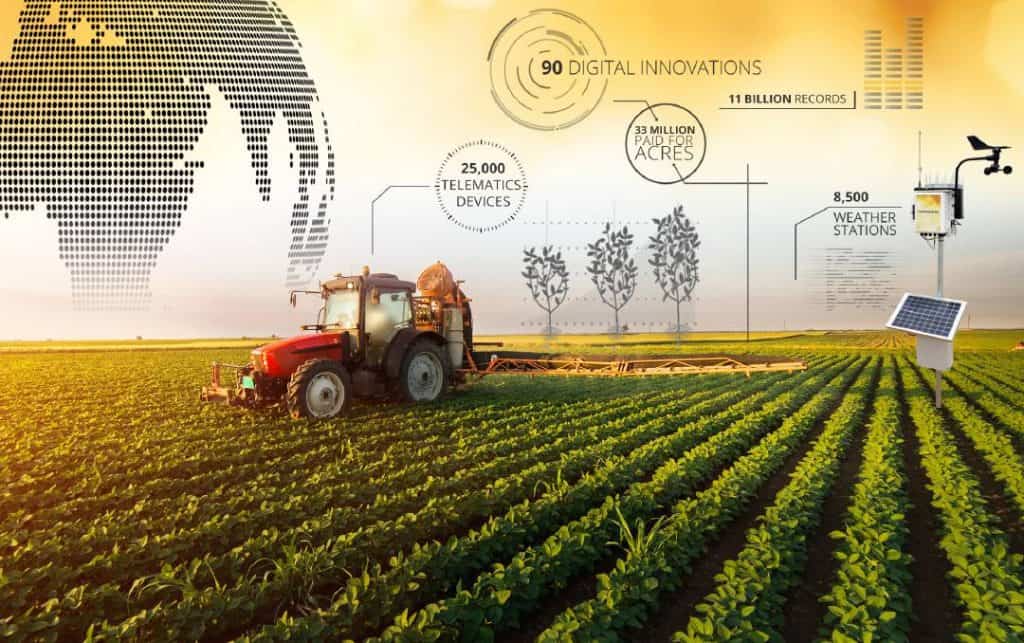
The use of big data is transforming the agriculture industry. By analyzing large datasets on weather patterns, soil quality, crop yields, and other factors, farmers can gain valuable insights into how to improve farming practices. In this article, we'll explore the ways that big data is being used to revolutionize farming practices and create a more sustainable and efficient agriculture industry.
What is Big Data?
Big data refers to the vast amount of data that is generated by digital devices and systems. Big data is characterized by its volume, velocity, and variety. The volume of data generated in agriculture can be immense, while the velocity at which it is generated can be rapid. The variety of data can also be diverse, including structured and unstructured data from a range of sources.
Revolutionizing Farming Practices with Big Data
Big data is being used to revolutionize farming practices in a number of ways:
- Precision Agriculture
Big data is being used to enable precision agriculture. By analyzing data on soil quality, weather patterns, and crop yields, farmers can make more informed decisions about planting, fertilizing, and harvesting. This can help to improve crop yields and reduce waste.
- Predictive Analytics
Big data is also being used to enable predictive analytics. By analyzing data on weather patterns, soil quality, and crop yields, farmers can predict future trends and plan accordingly. This can help to reduce risk and improve the efficiency of farming operations.
- Livestock Monitoring
Big data is also being used to enable livestock monitoring. By analyzing data on animal behavior, health, and performance, farmers can identify potential health issues and intervene before they become serious. This can help to improve animal welfare and reduce the risk of disease.
The Benefits of Big Data in Agriculture
The use of big data in agriculture offers a range of benefits, including:
- Increased Crop Yields
Big data can help farmers identify the optimal conditions for planting, fertilizing, and harvesting, leading to increased crop yields.
- Reduced Waste
Big data can help farmers reduce waste by identifying areas where resources are being used inefficiently, such as over-fertilization or over-watering.
- Improved Sustainability
Big data can help farmers improve sustainability by reducing the use of harmful chemicals and pesticides, and optimizing resource use.
The Challenges of Big Data in Agriculture
While the use of big data in agriculture offers many benefits, there are also challenges that need to be addressed:
- Data Security and Privacy
Data security and privacy are major concerns when it comes to big data and agriculture. As more and more data is collected and stored, there is a risk that it could be misused or exploited. There is a need for greater transparency and accountability around how data is collected, stored, and used.
- Data Quality
Data quality is another challenge in big data and agriculture. Ensuring that data is accurate, complete, and consistent can be difficult, especially when dealing with large volumes of data from multiple sources.
- Access to Technology
Finally, access to technology is a challenge in some parts of the world, particularly in developing countries. Without access to the technology required to collect and analyze big data, farmers in these regions may be left behind.
Conclusion
The use of big data is transforming the agriculture industry. By analyzing large datasets on weather patterns, soil quality, crop yields, and other factors, farmers can gain valuable insights into how to improve farming practices. The use of big data in agriculture offers a range of benefits, including increased crop yields, reduced waste, and improved sustainability. However, there are also challenges that need to be addressed, including data security and privacy, data quality, and access to technology. As the agriculture industry continues to integrate big data into its practices, it is important that these challenges are addressed in a way that prioritizes transparency, accountability, and the well-being of farmers, consumers, and the environment.